Which Drum Sander is right for you?
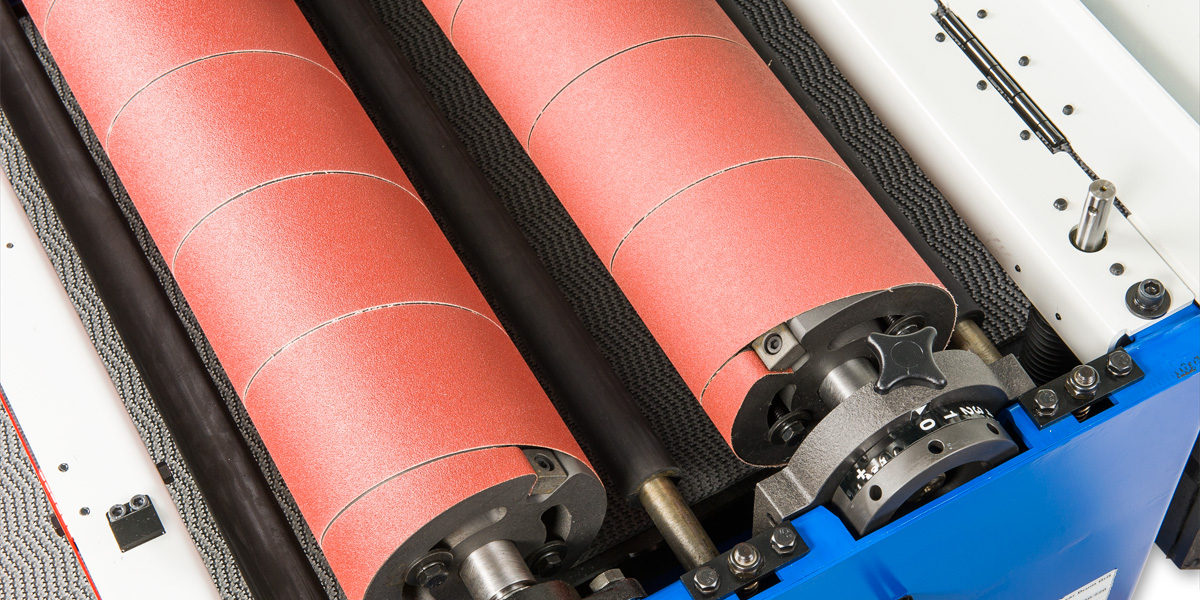
Most woodworkers use a variety of machines and power tools, as they offer a number of advantages. Drawing up a prospective list of basic machinery for a new workshop, would include a table or panel saw, planer/thicknesser, bandsaw, pillar drill, spindle moulder and router table.
While machines reduce effort and speed up the workflow, they can also be expensive and take up space in a workshop. Machines also have the capacity to generate a huge amount sawdust and other waste, which makes an efficient dust extraction system essential. In addition, the running costs, as well as depreciation, should be taken into account. And last but not least, it’s important to adhere to all H&S regulations and provide staff with PPE where required.
Drum Sanders
Having discussed basic machinery requirements, a convincing argument could be made for including a drum sander on the list. But first, it is useful to describe how the machine works, and what it does.
As the name suggests, the machine consists of abrasive material (the ‘loading’) which is spirally wound onto a rotating drum. This can be moved up and down by a handwheel. The work is placed on a variable speed conveyor and it's slowly fed underneath the rotating drum. It passes through to the other side having been perfectly sanded.
The initial outlay is quite high, especially when it’s considered that it must be connected to an extraction system that will handle fine dust. That said, once installed and working, the machine will very soon recoup its outlay.
Some benefits include:
- Solid boards with difficult grain can be sanded to a precise, accurate and smooth thickness
- Once glued together, panels can be passed through the machine to sand the face frame, leaving it true and level
- Larger machines will accept the width of a standard door (veneered or solid) in one pass
- Smaller machines are ‘open ended’, meaning that a workpiece, which is twice the width of the conveyor, can be sanded in two passes
- Drawer sides and other small components can be pre-sanded to thickness before use
- When thick 2mm or 3mm veneers are cut on the bandsaw, the drum sander is ideal for sanding the sawn surface
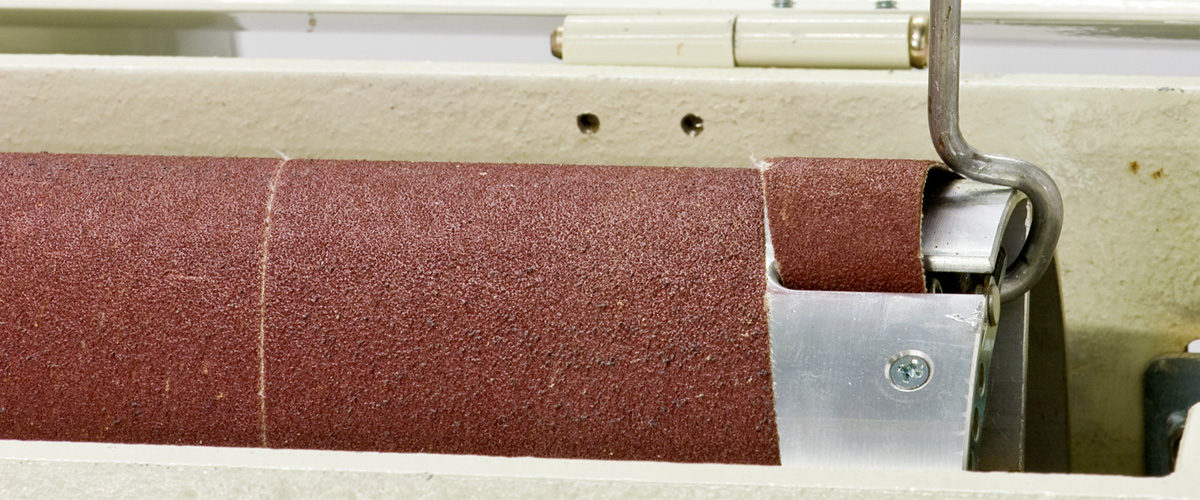
Planer/Thicknesser or Sander?
On first inspection, a drum sander is often thought of as a thicknessing device or to bring a rough sawn surface to a finished dimension. But nothing is further from the truth. Only a very light pass is required to sand a piece of sawn veneer (or similar). Attempting to remove too much material will cause the loading to clog and leave a burnt surface on the workpiece. It will also place too much of a strain on the open-ended cantilever arm.
Profile & Wire Brush Sanding
One option, which the Axminster ST-480 drum sander offers, is to replace the complete drum with one containing optional silicon carbide sanding brushes, which are available in a wide range of grits. The brush head is simple to fit in place of the sanding drum. It is very effective for sanding profiles and preparing mouldings for finishing. A wire brush attachment can also be fitted, which can be used to leave a distressed finish on new timber. Or for a brushed effect finish on a metal surface.
Oscillating Drum Sanders
The Jet 22-44 OSC is the largest of their open-ended sanders. It also has the unique feature of having an oscillating drum. This guarantees a very smooth surface, and at the same time, prolongs the life of the sanding belt.

Dual Drum Sanders
At the top end of the range are the Industrial series of drum sanders. One of their many enhanced features, which make them rather special, are their twin drums. This means that the first drum can be loaded with coarser abrasive and the second with a finer finishing grit. The twin drums are fitted with digital read-outs, which show the overall sanding height, but more importantly, the difference in height between the two drums. This allows the rear drum to be easily re-set when changing the abrasive to a different grit.

Conclusion
In the initial stages of planning a trade or furniture making workshop, it’s our view that it’s very worthwhile considering the inclusion of a drum sander. If space can be found then one of these machines is without doubt one of the best that can be added to any workshop.



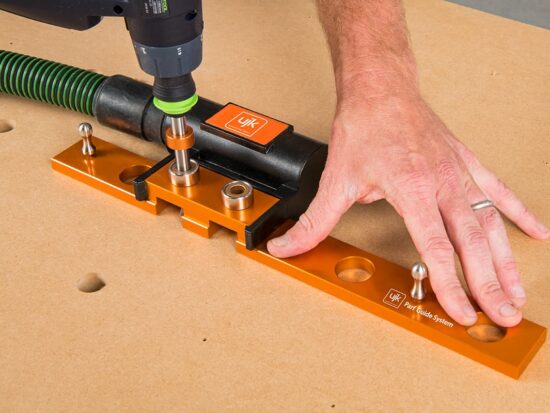
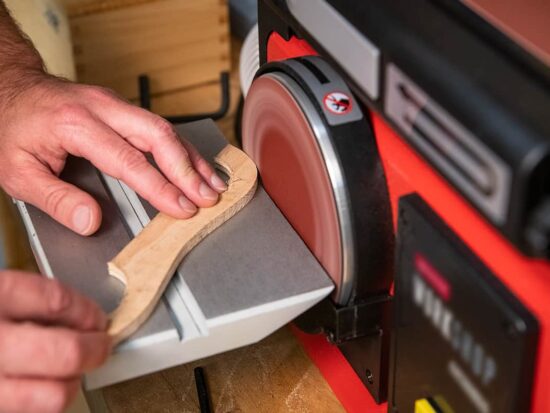
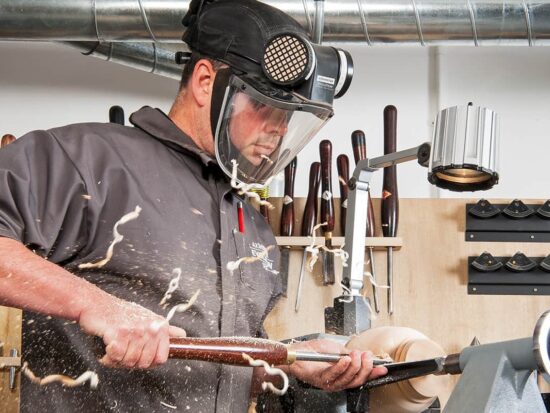

Good sales pitch - one small problem. I'd like to buy the 10-20 plus but you haven't got it in stock and haven't had for months. Might be an idea to get some stock before you start promoting it.
B M Gallagher
Hi, I'm sorry to hear you have been waiting a while. Our next delivery is due towards the end of June. You can still order it even though it isn't available as it will go on to back order so you are confirmed one when they are back in stock. Thanks, Carly
Had the Jet 22-44 oscillating sander for a couple of years now. The the issues surrounding fitting new abrasive have not really been addressed. The replacement paper supplied by axminster is slightly narrower causing fitting issues. The guidance by one commenter regarding the making of an MDF template is invaluable. A Technical tips section for all your machines based on peoples experience operating the machines would be much better. Sometimes the issues of design modification are either too expensive or take time to filter through so other solutions need to be published. Having attended one of Axminsters' workshop courses the company is big enough to take this on board through customer service.
Further to my last I notice that the instructions for fitting new abrasive material for the Jet 22-44 oscillating drum sander appear to have been modified and are a lot clearer than the instruction manual I have with the machine the link is content.jettools.com/assets/manuals/659006K_man_EN.pdf hope this solves some issues for a few but the recommendation of the MDF template for the starting angle is sound.
People what young people to start wood turning so how can they when lathe are so dear